Unraveling the Mysteries: Decoding the Enigmatic Book of the Dead in Egyptian Mythology
Step into the ancient world of Egypt, a realm steeped in artistry, mysticism, and captivating beliefs. Among the many enigmatic treasures left behind by this illustrious civilization, one text stands out in particular—the Book of the Dead. With its rich symbolism and intricate illustrations, this ancient manuscript has fascinated scholars and explorers for centuries. Join us as we embark on an extraordinary journey to unravel the secrets of the Book of the Dead, exploring its origins, purpose, religious significance, and lasting influence on our understanding of Egyptian mythology. Prepare to delve into the mystical underworld and discover a wealth of knowledge that has endured the test of time.
Contents
- What is the Book of the Dead?
- Origins and Purpose
- Beliefs and Concepts
- Importance and Significance
- Unveiling the Secrets
- Misconceptions and Controversies
- Legacy and Influence
- Conclusion
-
Frequently Asked Questions
- 1. What is the significance of the Book of the Dead in Egyptian culture?
- 2. How was the Book of the Dead used in ancient Egyptian funerary practices?
- 3. Are there different versions of the Book of the Dead?
- 4. How were the spells and rituals in the Book of the Dead believed to work?
- 5. What are some of the common symbols found in the Book of the Dead?
- 6. Was the Book of the Dead accessible to everyone in ancient Egypt?
- 7. Can the spells in the Book of the Dead still be deciphered?
- 8. What role did the weighing of the heart ceremony play in the Book of the Dead?
- 9. How has the Book of the Dead influenced modern knowledge?
- 10. Are there any modern misconceptions regarding the Book of the Dead?
- References
-
Frequently Asked Questions
- What is the significance of the Book of the Dead?
- How many different versions of the Book of the Dead exist?
- What kind of spells and rituals are found in the Book of the Dead?
- What does the Weighing of the Heart ceremony symbolize?
- Are the depictions of deities and mythology consistent throughout the Book of the Dead?
- Is the Book of the Dead considered a religious text?
- How has the Book of the Dead influenced modern knowledge of Egyptology?
- Do all copies of the Book of the Dead contain the same spells?
- Is the Book of the Dead still relevant today?
- Is there a modern-day equivalent to the Book of the Dead?
- References
- Read More
What is the Book of the Dead?
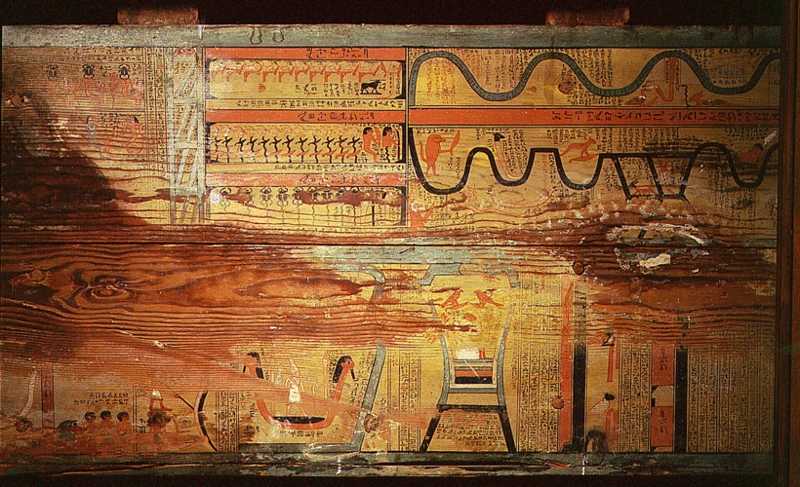
The Book of the Dead, also known as the “Book of Coming Forth by Day,” is an ancient Egyptian funerary text that holds a central place in Egyptian mythology and religious beliefs. This collection of texts was created to guide and assist the deceased in their journey through the afterlife. The book consists of a series of spells, prayers, and rituals, meticulously written on papyrus or inscribed on the walls of tombs. It serves as a comprehensive guidebook, offering instructions and protection for the deceased to overcome obstacles and ensure a successful transition to the afterlife.
Embedded within the Book of the Dead are various chapters, each focusing on different aspects of the afterlife and the challenges the deceased may encounter. These chapters cover a wide range of topics, including spells for protection against evil spirits, instructions for navigating the Duat (the Egyptian underworld), and hymns praising the gods. The book emphasizes the belief in amulets and magical incantations as avenues of divine intervention in the afterlife journey.
One notable feature of the Book of the Dead is its extensive use of illustrations and artwork. These vivid and intricate depictions serve to aid the deceased in visualizing the journey ahead, providing a visual narrative of the challenges faced and the rituals to perform. Additionally, the illustrations often portray scenes from Egyptian mythology, featuring deities such as Anubis, Osiris, and Ma’at.
The Book of the Dead had a profound influence on Egyptian funerary practices and beliefs surrounding the afterlife. It was primarily reserved for the elite and wealthy, who could afford to commission such intricate and personalized texts. The book’s importance is evident in the elaborate tombs of pharaohs and nobles, where detailed illustrations from the Book of the Dead adorned the walls, reinforcing the deceased’s spiritual journey and ensuring their eternal well-being. Today, the Book of the Dead provides an invaluable glimpse into the complex religious beliefs and rituals of ancient Egypt, shedding light on the cosmic significance placed on the afterlife and the human longing for immortality. Its profound influence can still be felt in the field of Egyptology and continues to captivate the imaginations of people worldwide.
Origins and Purpose
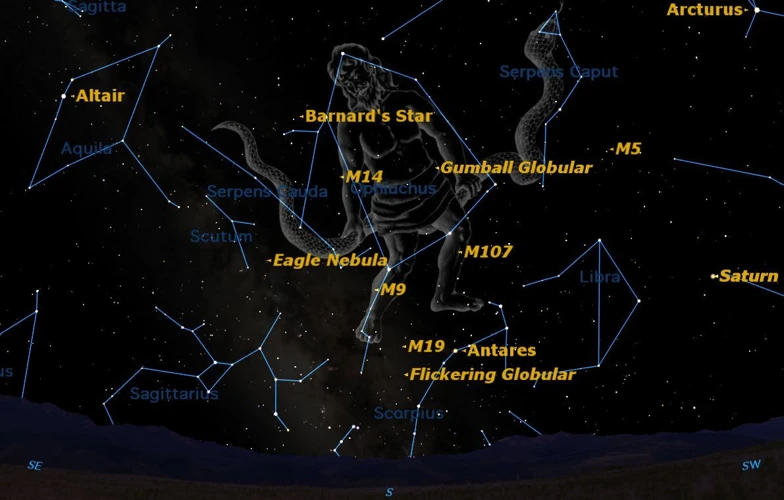
The origins of the Book of the Dead can be traced back to the early New Kingdom period of ancient Egypt, around the 16th century BCE. However, its roots can be found in earlier mortuary texts, such as the Pyramid Texts and the Coffin Texts, which were primarily reserved for the pharaohs and the nobility. As Egyptian religious beliefs and practices evolved, so did the concept of the afterlife and the need for a comprehensive guide like the Book of the Dead.
The purpose of the Book of the Dead was multifaceted. Firstly, it aimed to provide crucial instructions and magical spells that would enable the deceased to navigate the treacherous journey through the afterlife and reach the realm of Osiris, the god of the dead. The spells and rituals were believed to assist in safeguarding the deceased’s soul from malevolent entities and ensuring a smooth transition into the divine realm. The book also served as a way to preserve the memory and identity of the deceased by recording their personal details, ancestral lineage, and significant achievements.
The Book of the Dead played a vital role in the concept of judgment and the weighing of the heart ceremony, known as the “Weighing of the Heart.” It was believed that upon reaching the afterlife, the heart of the deceased would be weighed against the feather of Ma’at, the goddess of truth and justice. If the heart was found to be pure and devoid of sin, the deceased would be granted eternal life in the presence of the gods. However, if the heart was found to be heavy with sin, it would be devoured by the monstrous Ammit, resulting in the ultimate annihilation of the soul.
The origins and purpose of the Book of the Dead reflect the Egyptians’ deeply held beliefs in the afterlife and their desire for spiritual immortality. By studying this ancient text, we gain a profound understanding of the complex religious and funerary practices of one of the world’s most fascinating civilizations, offering a window into the mystical realm they held so sacred.
Beliefs and Concepts
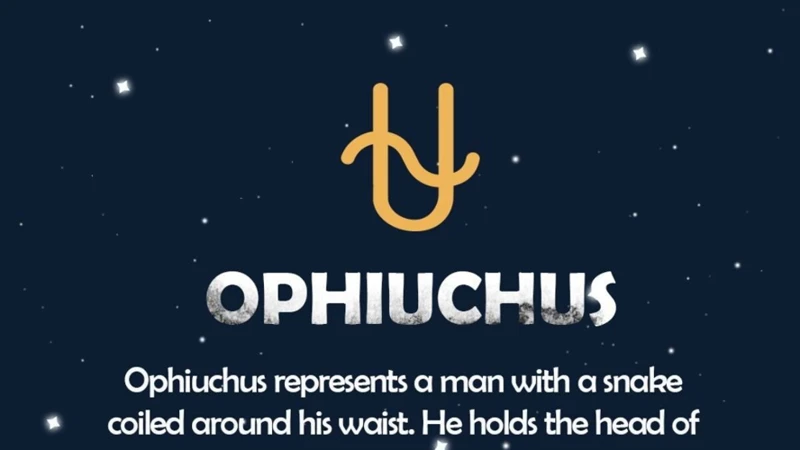
Beliefs and Concepts in the Book of the Dead delve deep into the complex and intricate mythology of ancient Egypt. Central to these beliefs is the concept of the afterlife journey, a crucial phase where the deceased must navigate through various challenges to reach the ultimate goal of eternal life. This journey is not merely a physical one but a spiritual and moral one as well, where the soul is weighed against the feather of Ma’at, the goddess of truth and justice, in the Weighing of the Heart ceremony. The spells and rituals outlined in the Book of the Dead are intended to aid the deceased in their journey, providing them with the necessary knowledge and protection to overcome obstacles. This belief in the power of spells and rituals reflects the Egyptians’ view of the interconnectedness between the physical and spiritual realms, as well as their trust in the efficacy of magic and divine intervention. Through the Book of the Dead, we gain a profound understanding of the ancient Egyptian belief system, their yearning for spiritual transcendence, and their reverence for the divine forces that governed their lives.
The Afterlife Journey
The Afterlife Journey described in the Book of the Dead holds a central role in Egyptian mythology. According to ancient beliefs, the journey after death was not simply a transition, but an intricate process filled with challenges and tests. The book provides a roadmap for the deceased, guiding them through the perilous realms of the Duat, the Egyptian underworld. The journey starts with the arrival of the deceased’s soul in the Hall of Two Truths. Here, the heart of the deceased is weighed on a scale against Ma’at’s feather, the symbol of truth and justice. If the heart is lighter than the feather, it signifies a virtuous life, and the deceased is granted access to the afterlife ruled by Osiris, god of the underworld. However, if the heart is heavier, it suggests a life filled with wrongdoing, and the soul faces the threat of eternal punishment by the devourer Ammit, a monstrous creature with the head of a crocodile, front legs of a lion, and hind legs of a hippopotamus.
To navigate the perils of the afterlife journey, the Book of the Dead provides detailed instructions and spells. These rituals aim to protect the deceased from malevolent spirits and provide them with the necessary knowledge and resources to overcome obstacles. The deceased is encouraged to recite specific spells and prayers, make offerings to deities, and wear amulets for protection. These rituals were believed to grant the deceased the strength and power needed to triumph over the challenges they would encounter in the underworld.
It is important to note that the journey described in the Book of the Dead is not a literal account but a symbolic representation of the soul’s transition to the afterlife. The text emphasizes the moral and ethical aspects of one’s earthly life and their impact on the ultimate judgment in the afterlife. The Afterlife Journey depicted in the Book of the Dead serves as a reminder of the importance of leading a balanced and righteous life, highlighting the significance of living in alignment with Ma’at, the cosmic order.
The Afterlife Journey described in the Book of the Dead provides a profound insight into ancient Egyptian beliefs regarding the soul’s destiny after death. It reinforces the notion that one’s actions in life hold immense consequences in the afterlife and underscores the universal human desire for justice and eternal rewards. The symbolic and metaphorical nature of the journey in the Book of the Dead adds to its mystique and depth of meaning, making it a captivating and enduring aspect of Egyptian mythology and culture.
Role of Spells and Rituals
The Book of the Dead places great emphasis on the role of spells and rituals in ensuring a smooth journey through the afterlife. Through the recitation of these carefully crafted spells and the performance of rituals, the deceased sought protection, guidance, and favor from the gods.
Each spell within the Book of the Dead served a specific purpose in the afterlife journey. Some spells aimed to protect the deceased from malevolent forces and entities that might obstruct their path. These protective spells sought to safeguard the individual from dangers such as evil spirits, demons, and serpents, which were believed to lurk in the underworld.
Other spells and rituals of the Book of the Dead focused on addressing the judgment that awaited the deceased in the Hall of Ma’at. This was where the heart of the deceased would be weighed against the Feather of Ma’at, representing truth and justice, in the presence of the divine tribunal. The Book of the Dead provided instructions for the deceased to recite specific spells and affirmations, ensuring the purity of their heart and their eligibility for a blissful afterlife.
Rituals were an integral part of the Book of the Dead. These rituals were performed either by the deceased themselves or by priests on their behalf. They involved offerings of food, drink, and symbolic objects to appease the gods and ensure their favor. The rituals were accompanied by the chanting of spells and the burning of incense, creating a sacred atmosphere and establishing a connection between the earthly realm and the divine.
The spells and rituals of the Book of the Dead served as a means of protection and guidance for the deceased, allowing them to navigate the treacherous journey of the afterlife. It is important to note that the efficacy of these spells and rituals relied on the belief in their power and the sincerity with which they were performed, emphasizing the vital role of faith and devotion in ancient Egyptian religious practices. The Book of the Dead offers a fascinating insight into the elaborate rituals and belief systems of ancient Egypt, showcasing the profound lengths to which the Egyptians went to secure a prosperous afterlife for themselves or their loved ones.
Importance and Significance
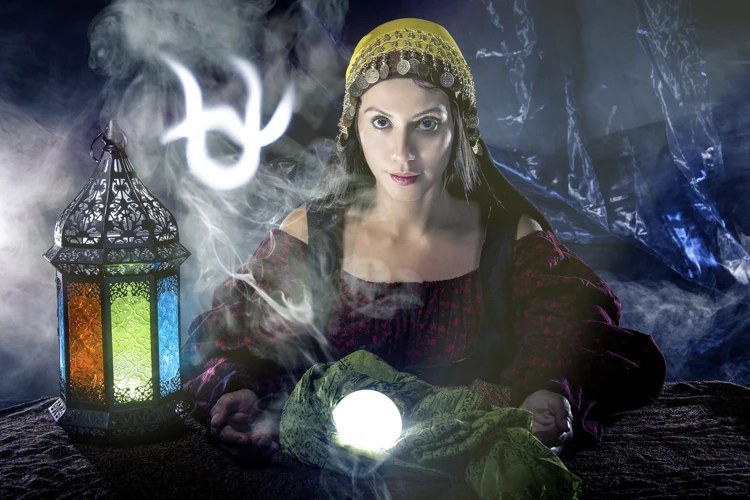
The significance of the Book of the Dead in Egyptian mythology cannot be overstated. This ancient text provides a profound understanding of Egyptian culture, spirituality, and the human quest for immortality. By delving into the pages of this sacred book, we gain a unique window into the religious beliefs, rituals, and cosmological concepts of ancient Egypt. The Book of the Dead serves as a gateway to deciphering the complexities of Egyptian mythology and the journey of the soul in the afterlife. It has not only impacted our understanding of ancient Egyptian society, but has also influenced modern knowledge and academic fields such as Egyptology and anthropology. By studying the Book of the Dead, we gain insights into the religious practices and cultural intricacies of the ancient Egyptians, opening doors to a world long gone and stimulating continued fascination and study.
Understanding Egyptian Culture
Understanding Egyptian Culture:
To truly grasp the significance of the Book of the Dead, it is essential to delve into the intricate tapestry of ancient Egyptian culture. The civilization of ancient Egypt, with its rich history spanning over three thousand years, left behind a legacy that still captivates our collective imagination today. The Book of the Dead provides invaluable insights into the beliefs, values, and practices that shaped this fascinating culture.
Religion played a central role in ancient Egyptian society, permeating every aspect of life. The Egyptians worshipped a vast pantheon of gods and goddesses, believing that these deities held power and influence over various aspects of the world. The Book of the Dead reflects this religious devotion, as it contains spells and rituals aimed at pleasing and appeasing the gods in the afterlife journey. These rituals ranged from recitations of hymns to the offering of food and amulets to ensure divine protection.
Apart from religion, another fundamental aspect of Egyptian culture was the belief in ma’at, which can be understood as a concept of order, balance, and truth. The Egyptians believed that the universe existed in harmony when ma’at was maintained. The Book of the Dead emphasizes the importance of ma’at, as the deceased would undergo a judgment process in the afterlife known as the Weighing of the Heart ceremony. This ceremony assessed the deceased’s actions in life, determining if they lived in accordance with ma’at. The Book of the Dead therefore reveals how this concept of ma’at was deeply ingrained in the fabric of Egyptian culture.
The book sheds light on the social hierarchies and class distinctions that were prevalent in ancient Egypt. While the contents of the Book of the Dead were available to a select few, primarily the elite and the wealthy, it underscores the societal divide between the privileged and the common people. The book’s detailed instructions and rituals for the afterlife journey reflect the belief that the elite had a greater opportunity for spiritual salvation and a successful transition to the afterlife.
By examining the Book of the Dead and its connection to Egyptian culture, we gain a deeper understanding of the religious, moral, and societal values that shaped this ancient civilization. It allows us to appreciate the significance of the book not only as a guide to the afterlife but also as a window into the complex tapestry of beliefs and practices that defined ancient Egyptian society. The study of the Book of the Dead bridges the gap between present and past, revealing the profound cultural legacy that has endured for centuries.
A Window into Ancient Beliefs
The Book of the Dead serves as a fascinating window into the ancient beliefs and worldview of the Egyptians. Through the meticulous preservation of this funerary text, we gain invaluable insights into their perception of the afterlife and their intricate religious practices. The rituals and spells described in the book reveal a deep conviction in the existence of an intricate underworld and the importance of navigating it successfully. The ancient Egyptians believed that the deceased needed to pass through various trials and tribulations to reach the paradise known as the Field of Reeds. These trials included facing judgment in the presence of the god Osiris, the weighing of the heart ceremony, and encounters with various deities and supernatural beings along the way.
One of the key beliefs embedded within the Book of the Dead is the concept of balance and harmony known as Ma’at. This principle underpinned the entire Egyptian civilization and was believed to be essential for maintaining cosmic order. The text emphasizes the importance of living a righteous and ethical life, as it would be considered during the judgment in the afterlife. The Book of the Dead provides us with an intricate understanding of the moral values and virtues that the ancient Egyptians held dear.
The religious practices depicted in the Book of the Dead also shed light on the complex relationship between the living and the deceased. The Egyptians believed that maintaining a strong connection with their ancestors was crucial for their journey into the afterlife. They regularly made offerings, performed rituals, and recited prayers to honor and remember their deceased loved ones. The Book of the Dead represents a tangible manifestation of this belief, serving as a guidebook to ensure the successful transition of the deceased to the afterlife and to maintain the eternal bond between the living and the dead.
The Book of the Dead provides a fascinating glimpse into the spiritual and religious beliefs of the ancient Egyptians. It offers us valuable insights into their perception of the afterlife, the importance they placed on ethical living, and the bonds they sought to maintain with their ancestors. It remains a testament to the deep philosophical and spiritual traditions that shaped one of the world’s most influential ancient civilizations.
Impact on Modern Knowledge
The Book of the Dead has had a significant impact on modern knowledge, offering valuable insights into the religious and cultural practices of ancient Egypt. Scholars and historians have extensively studied this ancient text, leading to a deeper understanding of Egyptian mythology and belief systems. The deciphering and analysis of the Book of the Dead have shed light on the complex religious rituals and customs surrounding death and the afterlife in ancient Egypt.
One area where the Book of the Dead has had a profound impact is the field of Egyptology. The study of this ancient text has allowed experts to reconstruct the religious and cosmological framework of ancient Egyptian society. It has provided clues about the importance placed on different gods, goddesses, and mythological concepts, leading to a more comprehensive understanding of the ancient Egyptian pantheon.
The Book of the Dead has been instrumental in deciphering and translating ancient Egyptian hieroglyphs. When the Rosetta Stone was discovered in 1799, bearing a decree written in multiple scripts including hieroglyphs, it provided the key to unlocking the mystery of hieroglyphic writing. Scholars used the knowledge gleaned from the Book of the Dead to decode and interpret these ancient texts, allowing for a deeper exploration of Egyptian literature, historical records, and religious texts.
The Book of the Dead has had a lasting impact on the popular culture and artistic representations of ancient Egypt. Its imagery and symbolism have influenced various forms of art, literature, and entertainment, permeating the modern perception of ancient Egyptian civilization. Countless books, movies, and artworks have drawn inspiration from the themes and iconography found within the Book of the Dead, further perpetuating its cultural significance.
Ultimately, the study and exploration of the Book of the Dead have contributed immensely to our understanding of ancient Egypt’s religious beliefs, rituals, and mythological framework. It has provided a crucial link to the past, allowing us to glimpse into the minds and hearts of the ancient Egyptians and gain insights into their views on life, death, and the afterlife. The impact of this ancient text reverberates through time, enabling us to appreciate and marvel at the rich cultural heritage of this extraordinary civilization.
Unveiling the Secrets
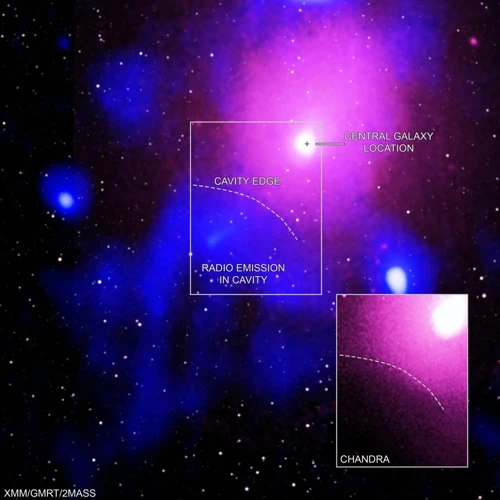
Unveiling the Secrets: Peering into the Enigmatic Depths of the Book of the Dead
Step into the realm of ancient Egypt and embark on a journey to unravel the secrets hidden within the mysterious Book of the Dead. Delve into the world of manuscripts and texts that have survived the test of time, offering a glimpse into the religious beliefs and rituals of this fascinating civilization. Explore the intricate depictions of deities and mythological scenes, each serving as a key to unlocking the profound symbolism woven throughout the book’s pages. Witness the mesmerizing ceremony known as the Weighing of the Heart, where the fate of the deceased is decided based on the judgment of Ma’at. As modern scholars strive to understand the complexities of the Book of the Dead, controversies arise surrounding its literal versus symbolic interpretation and the authenticity of translations. Yet, its legacy endures, impacting not only ancient art and literature but also modern knowledge and our understanding of Egyptian mythology.
Manuscripts and Texts
Manuscripts and Texts
The Book of the Dead exists in the form of numerous manuscripts, each unique in its content and presentation. These manuscripts were meticulously written on papyrus, a material made from the pith of the papyrus plant that grew abundantly along the Nile River. The texts were typically written in black or red ink, with headings and important passages highlighted in vibrant colors to draw attention and aid in navigation.
The manuscripts were often personalized to suit the specific needs and beliefs of the deceased. They would include the name of the individual and may also include customized spells and rituals. These personalized elements reinforced the notion that each person’s journey through the afterlife was unique and required individualized guidance.
The Book of the Dead manuscripts were composed of various sections or chapters, each known as a “spell.” These spells were numbered, and the total number of spells varied between manuscripts. The spells covered a wide range of topics, such as protection from evil spirits, guidance through the underworld, and the weighing of the heart ceremony. Some manuscripts could contain over 200 spells, while others had fewer. The content of the spells was carefully selected to ensure the deceased had the necessary knowledge and assistance to navigate the afterlife successfully.
Copies of the Book of the Dead were often buried with the deceased or placed in their tombs to accompany them in the journey to the afterlife. These manuscripts were considered essential for the deceased’s salvation and were believed to provide them with the means to overcome obstacles on their path. The presence of the Book of the Dead in the tombs highlights the significance and reliance placed on these texts in ancient Egyptian society.
Studying the various manuscripts and their differences has allowed modern Egyptologists to gain a deeper understanding of the religious beliefs and practices of ancient Egyptians. The variations in texts between manuscripts provide insights into regional differences in religious traditions and the evolving nature of Egyptian mythology over time. The manuscripts are not only a testament to the skill and craftsmanship of ancient scribes but also serve as a valuable resource for scholars seeking to unlock the secrets and intricacies of the Book of the Dead.
Depiction of Deities and Mythology
The Book of the Dead provides a captivating insight into the ancient Egyptian pantheon of gods and goddesses, as well as their mythological narratives. Within its pages, depictions of deities play a crucial role in guiding the deceased through their journey to the afterlife. These illustrations serve as visual representations of the gods and goddesses who hold sway over different aspects of the netherworld and the cosmic order.
The book showcases a diverse array of deities, each with their unique roles and responsibilities. One of the most prominent figures depicted in the Book of the Dead is Anubis, the jackal-headed god associated with embalming and mummification. Anubis is often portrayed in the text as the guardian and protector of the deceased, leading them through the perilous paths of the underworld towards their final judgment.
Another significant deity featured is Osiris, the god of the afterlife and the judge of the dead. In the illustrations, Osiris is depicted as a mummified figure, often seated on a throne surrounded by symbols of power and dominion. He presides over the Weighing of the Heart ceremony, a pivotal moment in the afterlife journey where the heart of the deceased is weighed against the Feather of Ma’at, the goddess of truth and justice.
The Book of the Dead also showcases other deities such as Ra, the sun god, who plays a vital role in the resurrection and journey of the deceased. Ra is often depicted as a falcon-headed figure, symbolizing his association with the sun and his ability to provide light and nourishment to the deceased within the afterlife. Additionally, the book features goddesses like Isis, Nephthys, and Hathor, who offer protection, guidance, and nurturing to the deceased.
Through these intricate illustrations, the Book of the Dead not only provides a visual representation of the gods but also weaves together the mythological narratives that shaped ancient Egyptian beliefs. The intricate details and symbolism in the illustrations serve as a reminder of the interconnectedness between the gods, the natural world, and human existence. They depict the underlying belief in divine intervention and the importance of adhering to the cosmic order, ultimately ensuring a successful journey to the afterlife and eternal bliss with the gods. The depictions of deities and mythology found within the Book of the Dead are a testament to the rich and complex religious beliefs of the ancient Egyptians, offering us a window into their profound connection with the divine realm.
The Weighing of the Heart Ceremony
The Weighing of the Heart Ceremony is a pivotal event depicted in the Book of the Dead, highlighting the ancient Egyptian belief in judgment and the balance of one’s actions in the afterlife. According to their beliefs, after death, the deceased would face a tribunal in the Hall of Ma’at, presided over by the god Osiris. In this ceremony, the heart of the deceased would be weighed against the feather of Ma’at, the goddess of truth and justice. The heart was believed to contain the essence of a person’s character and deeds, serving as a moral compass.
The ceremony begins with the deceased reciting a declaration of innocence, affirming that they have not committed specific negative actions or violated moral and ethical principles. The heart is then placed on one side of the scale, while the feather of Ma’at is placed on the other. The god Thoth, depicted as an ibis-headed deity, acts as the scribe, meticulously recording the results of the judgment. If the heart is lighter than the feather, it signifies that the deceased has lived a righteous life and would be deemed worthy of entering the realm of eternal paradise. However, if the heart is heavy with sins and misconduct, it would be devoured by the monstrous creature Ammit, resulting in eternal damnation.
This ceremony reflects the profound emphasis placed on morality and ethical behavior in ancient Egyptian society. It symbolizes the belief that one’s actions in life would directly impact their fate in the afterlife. The Weighing of the Heart Ceremony served as a reminder to the living to uphold moral integrity and adhere to the principles of Ma’at. It reinforced the significance of leading a virtuous life and resonated with the societal values of justice, truth, and balance.
The Weighing of the Heart Ceremony holds a powerful metaphorical significance, demonstrating the Egyptian belief in cosmic order and the integral connection between the human soul and divine justice. Its portrayal in the Book of the Dead showcases the complexity and depth of their understanding of morality, accountability, and the eternal consequences of one’s actions. This profound ceremony continues to captivate the imagination and serves as a poignant reminder of the enduring human quest for righteousness and spiritual enlightenment. To learn more about the fascinating principles of balance and harmony, you can explore the concept of trine aspects in astrology.
Misconceptions and Controversies

Misconceptions and Controversies
The Book of the Dead, like many ancient texts, has faced its fair share of misconceptions and controversies. One significant point of contention lies in the interpretation of the text—whether it should be understood literally or symbolically. Some argue that the spells and rituals described in the book were thought to have literal power and were meant to be performed precisely as written, while others view them as symbolic representations of the deceased’s journey through the afterlife. This debate raises questions about the true intentions and beliefs of the ancient Egyptians and requires careful examination of the cultural and religious context in which the Book of the Dead was created.
Another controversy surrounding the Book of the Dead revolves around the authenticity of the texts and translations. Over time, multiple versions and variations of the book have been discovered, making it challenging to determine the most accurate and original rendition. Translation efforts have been hampered by the complexity of the ancient Egyptian language and the difficulty in fully grasping the subtle nuances and meanings behind the words and symbols. Scholars and Egyptologists continue to refine their understanding of the text, but there is still much to uncover and debate.
Modern misunderstandings of the Book of the Dead also contribute to the controversies surrounding its interpretation. Popular culture and media often depict the book as a mystical and magical guide to unlocking supernatural powers or discovering hidden secrets. While the book does contain elements of magic and spirituality, it is imperative to approach it with respect for its historical and cultural significance rather than viewing it as a mere source of entertainment or fantastical claims.
These controversies remind us of the complexities inherent in studying ancient texts and mythologies. The Book of the Dead remains a subject of fascination and debate, offering a glimpse into the mysteries of ancient Egypt and inspiring further exploration and research into the realms of life, death, and the eternal beyond.
The Literal vs Symbolic Interpretation
The Literal vs Symbolic Interpretation
When examining the Book of the Dead, one encounters an ongoing debate regarding its interpretation: should the text be understood literally or symbolically? This question poses a fascinating conundrum for scholars and enthusiasts alike. On one hand, some argue for a literal interpretation, asserting that the spells and rituals within the book were intended to provide practical guidance for the deceased in the afterlife. According to this perspective, the text should be seen as a set of instructions to be followed precisely to ensure a successful journey through the Duat. Conversely, others advocate for a symbolic interpretation, suggesting that the spells and rituals should be understood metaphorically, representing deeper spiritual truths rather than literal actions.
Those who support the literal interpretation emphasize that the ancient Egyptians had a strong belief in the power of words and rituals. They argue that the spells and prayers within the Book of the Dead were meant to be recited verbatim to activate their intended effects, such as protection from malevolent forces or assistance from benevolent deities. They view the book as a guidebook providing practical knowledge for navigating the complex and perilous afterlife journey.
On the other hand, proponents of the symbolic interpretation highlight the intricate symbolism and metaphorical language used throughout the text. They argue that the spells and rituals should be understood as allegorical representations of the challenges and transformations the deceased would encounter in the afterlife. Supporters of this view point out that the intricate illustrations often depict symbolic scenes, such as the Weighing of the Heart ceremony, where the heart of the deceased is measured against the feather of Ma’at, the goddess of truth and justice. These symbolic interpretations suggest that the Book of the Dead was intended as a spiritual guide, providing moral and ethical teachings rather than literal instructions.
The debate between literal and symbolic interpretation highlights the complexity and depth of the Book of the Dead. Ultimately, both perspectives contribute to our understanding of this ancient text, providing different lenses through which to explore the profound beliefs and aspirations of the ancient Egyptians. Whether one sees the book as a practical manual or a symbolic guide, its significance as a cultural and religious artifact remains undeniable, offering a glimpse into the intricate worldview of one of the world’s greatest ancient civilizations.
Authenticity of Texts and Translations
The authenticity of the texts and translations of the Book of the Dead has been a subject of debate and scrutiny among scholars. Due to the considerable age of the texts and the complexities of the Egyptian hieroglyphic script, there are inherent challenges in accurately deciphering and interpreting the content. This has led to differing opinions regarding the accuracy and reliability of the translations.
One factor that complicates the authenticity of the texts is the existence of multiple versions of the Book of the Dead. Different individuals and workshops produced their own versions, resulting in variations in the spells and illustrations found within the texts. These differences contribute to the difficulty in determining a definitive, standardized version.
Another challenge lies in the translation of the texts from the ancient Egyptian language into modern languages. The hieroglyphic script is complex, with individual signs representing a combination of sounds and concepts. Modern Egyptologists have made great strides in deciphering and understanding the hieroglyphs, but there are still uncertainties and room for interpretation.
The translations of the Book of the Dead have evolved over time as new discoveries are made and greater understanding of ancient Egyptian language and culture is gained. Early translations were often influenced by the prevailing beliefs and biases of the time, leading to potential inaccuracies or misinterpretations.
Despite these challenges, scholars and Egyptologists continue to study and refine the translations of the Book of the Dead. Through the collaboration of experts from various fields, including linguistics, archaeology, and religious studies, efforts have been made to establish more accurate translations and interpretations. The use of advanced technologies, such as digital imaging and computer analysis, has also aided in deciphering the texts with greater precision.
It is important to approach the translations of the Book of the Dead with a critical eye. While there may be discrepancies and uncertainties, the collective efforts of researchers continue to shed light on the religious beliefs, funerary practices, and mythology of ancient Egypt, allowing us to gain a deeper understanding of this captivating civilization. For those fascinated by the authenticity of ancient texts and the challenges of deciphering them, the study of the Book of the Dead presents an intriguing and ongoing exploration into the mysteries of the past.
Modern Misunderstandings
Modern Misunderstandings
Despite the numerous attempts to decipher the Book of the Dead, there are still misconceptions and misinterpretations that surround this ancient text. One common misunderstanding is the literal interpretation of the spells and rituals contained within the book. Some individuals mistakenly believe that these spells hold magical powers or can directly impact their own lives. However, it is important to understand that the Book of the Dead was meant as a guidebook for the deceased in their journey through the afterlife, rather than a manual for influencing events in the physical world.
Another misconception revolves around the idea that the Book of the Dead was a single text with a fixed set of spells and illustrations. In reality, the book varied in content and format depending on the individual and the specific time period it was created. Each copy of the Book of the Dead was custom-made and tailored to the deceased, often featuring personalized prayers and illustrations. This individualized nature of the text highlights the belief in the book’s efficacy for the individual’s afterlife journey.
The translation and interpretation of the Book of the Dead are also subject to controversy and misunderstanding. Some early translations of the text were flawed or incomplete, leading to misunderstandings about the true meanings of certain passages. Additionally, the complex symbolism and allegorical nature of the text make it challenging for scholars to fully grasp its intricacies. Ongoing research and scholarly debate contribute to a deeper understanding of the Book of the Dead, but there are still aspects that remain open to interpretation.
While modern misconceptions and misunderstandings exist, they do not diminish the significance and value of the Book of the Dead. It continues to be a remarkable testament to ancient Egyptian culture, spirituality, and the enduring quest for eternal life. By dispelling these misunderstandings, we can appreciate the Book of the Dead for what it truly represents—a unique and profound religious text that offers insights into the beliefs and practices of one of the world’s most fascinating ancient civilizations.
Legacy and Influence
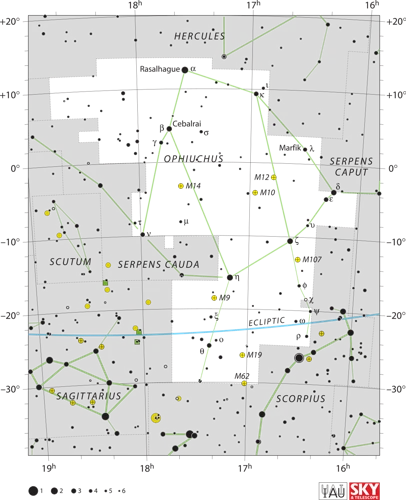
The legacy and influence of the Book of the Dead in Egyptian mythology extend far beyond the ancient civilization that created it. This sacred text has left an indelible mark on various aspects of human culture, particularly in the realms of art and literature. The intricate illustrations and captivating symbolism found within the book have inspired countless artists, writers, and filmmakers throughout history. It has served as a source of inspiration for renowned authors like H.P. Lovecraft and Neil Gaiman, who have woven elements of Egyptian mythology into their works. Additionally, the Book of the Dead has influenced the field of Egyptology, shaping our understanding of ancient Egyptian beliefs and rituals surrounding death and the afterlife. Its enduring fascination and continual study ensure that the Book of the Dead will remain a vital part of human heritage and our ongoing exploration of the mysteries of the past.
Effects on Art and Literature
The Book of the Dead has left an indelible mark on the world of art and literature throughout history. Its profound symbolism, captivating narratives, and intricate illustrations have inspired countless artists and writers across different cultures and time periods. In the realm of art, the imagery and themes found within the Book of the Dead have been incorporated into various mediums, such as sculpture, painting, and even contemporary installations.
One notable example of the Book of the Dead’s influence on art is the famous Egyptian tomb paintings. These vivid and detailed depictions of the afterlife, inspired by the book’s teachings, adorn the walls of tombs, providing a visual representation of the deceased’s journey into eternity. The intricate iconography, including scenes of the weighing of the heart ceremony and encounters with deities, showcase the elaborate imagination and artistic skills of the ancient Egyptian artisans.
Beyond ancient Egypt, the Book of the Dead has also influenced literature around the world. Its themes of death, resurrection, and the pursuit of eternal life have found echoes in numerous works of literature, from ancient texts to modern novels. Writers have drawn inspiration from the book’s teachings, utilizing its symbolisms and concepts to explore themes of mortality, spirituality, and the human condition.
An example of the Book of the Dead’s impact on literature can be seen in the works of renowned author Neil Gaiman. His novel “American Gods” explores the idea of ancient Egyptian deities existing in modern society, incorporating elements of Egyptian mythology and the Book of the Dead into its narrative. The book exemplifies how ancient beliefs and symbolism continue to permeate contemporary literature, captivating readers and igniting their curiosity about Egyptian mythology.
The Book of the Dead has had a profound effect on the realms of art and literature. Its symbolic imagery, rich narratives, and timeless themes have inspired artists and writers throughout history, ensuring the book’s enduring influence on creative expressions around the world. Whether through powerful tomb paintings or thought-provoking novels, the Book of the Dead continues to captivate our imagination and serves as a testament to the enduring power of ancient Egyptian mythology and beliefs.
Continued Fascination and Study
The Book of the Dead continues to captivate scholars, historians, and enthusiasts, leading to an ongoing fascination and extensive study of its contents. The intricate religious beliefs and symbolism contained within this ancient text provide a window into the profound spirituality of the ancient Egyptians. Researchers have dedicated countless hours to deciphering the spells, unraveling the complex symbolism, and interpreting the illustrations. This ongoing study has led to a deeper understanding of Egyptian mythology, funerary rituals, and the society that produced these remarkable texts.
One area of particular interest is the linguistic analysis of the Book of the Dead. Scholars have meticulously examined the text, deciphering and translating the hieroglyphic inscriptions, seeking to reconstruct the precise meaning of each spell and prayer. This linguistic analysis has shed light on the religious concepts, cultural practices, and the evolving role of the Book of the Dead in Egyptian society.
Another aspect of ongoing study is the exploration of the Book of the Dead’s influence on later periods of Egyptian history. Researchers have traced how the concepts and rituals elucidated in the book have permeated other areas of Egyptian culture, such as tomb paintings, religious statues, and even everyday life. Additionally, the impact of the Book of the Dead on neighboring civilizations and their beliefs in the afterlife has been a subject of interest, highlighting the cultural exchange and cross-pollination of ideas in the ancient world.
Technological advancements have also played a significant role in the continued study of the Book of the Dead. Digital preservation and analysis techniques, such as high-resolution imaging and spectral analysis, have allowed researchers to delve deeper into the text, uncovering hidden layers of text, deciphering faded inscriptions, and gaining new insights into the meaning behind the illustrations. These advancements have opened up new avenues for research and contributed to a more comprehensive understanding of this ancient Egyptian masterpiece.
Ultimately, the continued fascination and study of the Book of the Dead serve to keep the ancient Egyptian civilization alive in the modern world. Through the dedicated efforts of researchers, these mystical texts continue to offer invaluable insights into the religious beliefs, rituals, and artistry of one of the most captivating civilizations in history. As new discoveries are made and fresh interpretations emerge, the allure and importance of the Book of the Dead only continue to grow, ensuring that its secrets will captivate minds for generations to come.
Conclusion
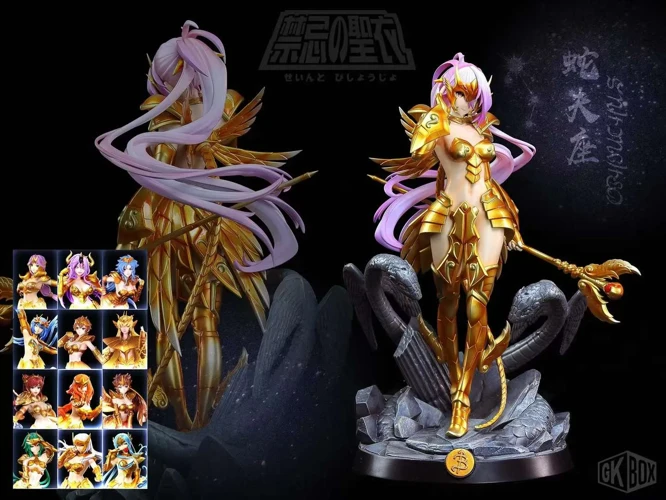
In conclusion, the Book of the Dead remains a captivating and significant artifact in Egyptian mythology. Its intricate spells, rituals, and illustrations provide unparalleled insights into the ancient Egyptian beliefs surrounding the afterlife. With its emphasis on symbolism, magic, and deities, this ancient funerary text serves as a testament to the profound spiritual connection the Egyptians had with the divine realm. The Book of the Dead not only offers a glimpse into the past but also continues to inspire modern scholarship and artistic interpretation of Egyptian culture and mythology. Its influence extends far beyond its original purpose, permeating various aspects of society, from literature to cinema, and ensuring that the exploration of this ancient text will persist for generations to come. Although the secrets of the Book of the Dead may never be fully unraveled, its enduring legacy continues to captivate and fascinate, inviting us to ponder the mysteries of life, death, and the beyond.
For more fascinating insights into ancient practices and beliefs, you may be interested in exploring our article on eclipse photography tips and techniques.
Frequently Asked Questions

1. What is the significance of the Book of the Dead in Egyptian culture?
The Book of the Dead holds immense significance in Egyptian culture as it provides a detailed guide for the deceased to successfully navigate their journey through the afterlife. It reflects the ancient Egyptians’ belief in the continuation of life beyond death and the importance of rituals and spells in ensuring a favorable outcome in the realm of the gods.
2. How was the Book of the Dead used in ancient Egyptian funerary practices?
The Book of the Dead was placed alongside the deceased in their tomb, serving as a vital tool for their journey through the afterlife. It was believed that the spells and rituals inscribed in the book would protect the deceased from malevolent spirits, help them pass the judgment of the gods, and guarantee their eternal happiness and well-being.
3. Are there different versions of the Book of the Dead?
Yes, there are several versions of the Book of the Dead, with variations in spell sequences and illustrations depending on the time period and social status of the deceased. The length and complexity of the text varied as well, ranging from shorter versions for common people to longer and more elaborate versions for pharaohs and high-ranking individuals.
4. How were the spells and rituals in the Book of the Dead believed to work?
Ancient Egyptians believed that by reciting the spells and performing the rituals outlined in the Book of the Dead, they could invoke the protection and assistance of various gods and goddesses. These divine entities would intercede on behalf of the deceased, ensuring their successful passage through the perilous journey of the afterlife.
5. What are some of the common symbols found in the Book of the Dead?
The Book of the Dead is replete with symbolism, with common motifs including the scarab beetle (representing rebirth and transformation), the feather of Ma’at (symbolizing truth and justice), the ankh (symbolizing life), and depictions of various gods and goddesses associated with the afterlife, such as Osiris and Anubis.
6. Was the Book of the Dead accessible to everyone in ancient Egypt?
No, the Book of the Dead was primarily accessible to the wealthy and elite members of Egyptian society. Commissioning and producing a personalized copy of the book was an expensive endeavor, making it an exclusive privilege for those with sufficient financial means.
7. Can the spells in the Book of the Dead still be deciphered?
Thanks to the efforts of Egyptologists, many of the spells and hieroglyphs in the Book of the Dead have been deciphered. Although some sections remain challenging to interpret fully, scholars have made significant progress in understanding the texts and their intended meanings.
8. What role did the weighing of the heart ceremony play in the Book of the Dead?
In the weighing of the heart ceremony, depicted in the Book of the Dead, the heart of the deceased is placed on a scale and balanced against the feather of Ma’at, the goddess of truth and justice. If the heart is found to be lighter than the feather, it signifies that the deceased lived a virtuous life, allowing them to proceed to the afterlife. However, if the heart is heavy with wrongdoing, it could result in the soul being devoured by a monstrous creature.
9. How has the Book of the Dead influenced modern knowledge?
The Book of the Dead has significantly contributed to our understanding of ancient Egyptian religion, mythology, and funerary practices. It has provided insights into the beliefs, rituals, and symbols of ancient Egyptians, expanding our knowledge of this remarkable civilization and enriching our appreciation of their cultural heritage.
10. Are there any modern misconceptions regarding the Book of the Dead?
Despite its extensive study, there are still modern misconceptions surrounding the Book of the Dead. Some interpret its spells and rituals literally, while others may misconstrue its purpose as a literal travel guide for the deceased. It is important to approach the text with an understanding and appreciation for the symbolic and metaphorical nature of ancient Egyptian beliefs.
References
Frequently Asked Questions

What is the significance of the Book of the Dead?
The Book of the Dead holds immense significance as it provides invaluable insights into ancient Egyptian beliefs, rituals, and the afterlife journey.
How many different versions of the Book of the Dead exist?
There are more than 200 known versions of the Book of the Dead, each tailored to different individuals and their specific needs for the afterlife.
What kind of spells and rituals are found in the Book of the Dead?
The Book of the Dead contains a wide range of spells and rituals, including prayers, hymns, and magical incantations, designed to guide and protect the deceased in their journey through the afterlife.
What does the Weighing of the Heart ceremony symbolize?
The Weighing of the Heart ceremony symbolizes the judgment of the deceased’s soul. The heart is weighed against the feather of Ma’at, representing truth and justice. If the heart is found to be lighter, the soul can proceed to the afterlife.
Are the depictions of deities and mythology consistent throughout the Book of the Dead?
No, the depictions of deities and mythology can vary in different versions of the Book of the Dead. These variations reflect the individual beliefs and preferences of the deceased.
Is the Book of the Dead considered a religious text?
Yes, the Book of the Dead is considered a religious text. It is a collection of teachings, rituals, and prayers that were of great importance to the ancient Egyptians.
How has the Book of the Dead influenced modern knowledge of Egyptology?
The Book of the Dead has greatly contributed to our understanding of ancient Egyptian culture, beliefs, and religious practices. It has provided invaluable clues for deciphering hieroglyphics and unraveling the mysteries of their civilization.
Do all copies of the Book of the Dead contain the same spells?
No, not all copies of the Book of the Dead contain the same spells. Although certain spells and rituals are commonly found, each version can differ in the selection and arrangement of texts.
Is the Book of the Dead still relevant today?
Yes, the Book of the Dead continues to intrigue and fascinate people today. Its influence can be seen in various forms of art, literature, and popular culture, making it a lasting testament to the enduring power of ancient Egyptian beliefs.
Is there a modern-day equivalent to the Book of the Dead?
While there is no direct modern-day equivalent, the concept of a guide or manual for the afterlife can be found in various religious and spiritual traditions. Examples include the Tibetan Book of the Dead and the Egyptian Book of Gates.
References
- Ancient Mysteries of Egyptian Book of the Dead
- Unveiling The Mysteries Of Ancient Egyptian Mythology







